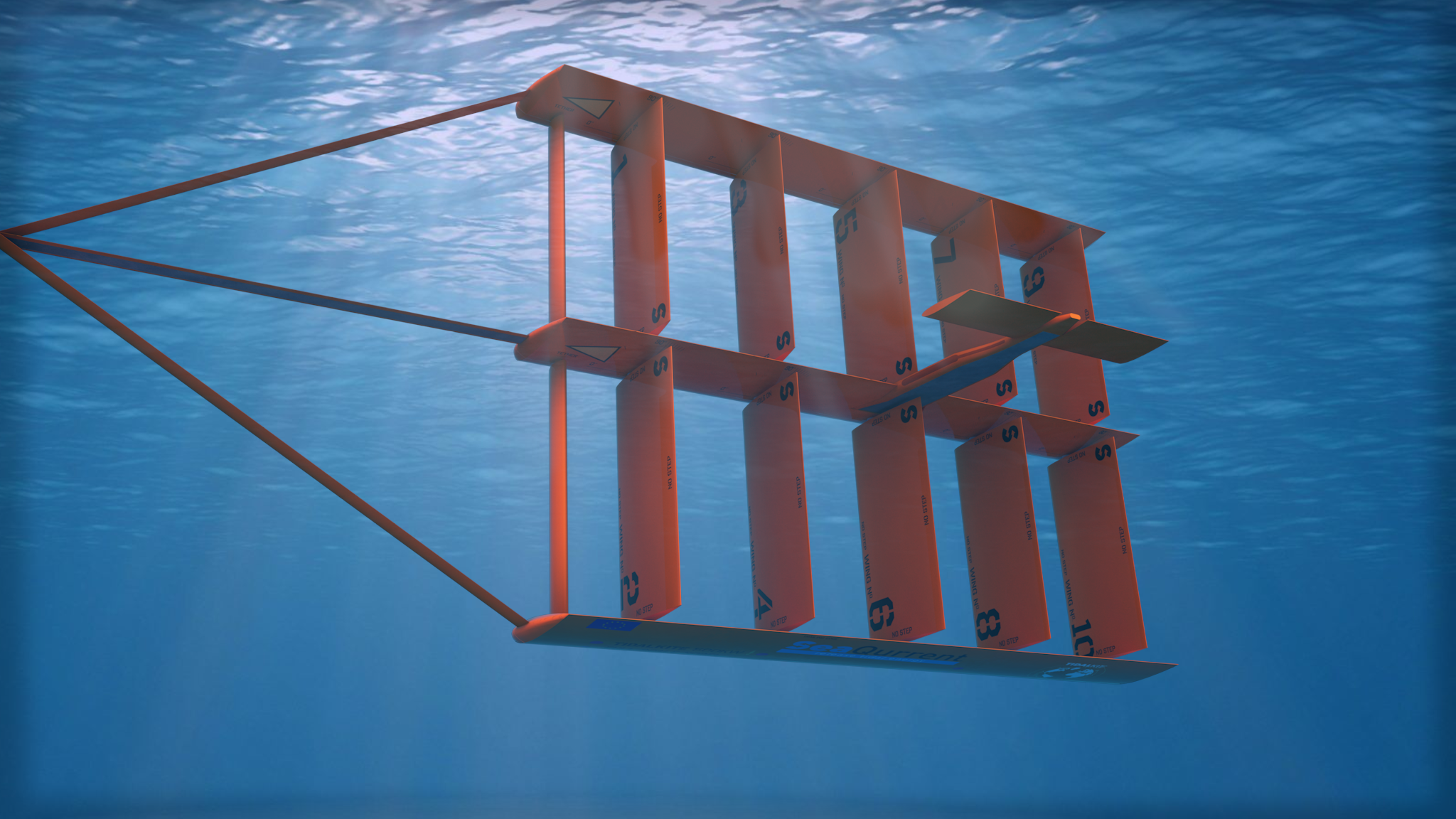
About SeaQurrent
- Founders: Youri Wentzel, Maarten Berkhout and Maurits Alberda
- Founded in: 2013
- Employees: 3
- Money raised: Subsidy
- Ultimate goal: The mission is to make tidal energy affordable
Apart from the sun and the wind, tidal currents can play an important role in the transition to a sustainable future. SeaQurrent’s underwater kite, or ‘Tidalkite’, harnesses energy from the currents in the Wadden Sea caused by the difference between low and high tides. Co-founder Maurits Alberda brings you up to date on how the company is doing.
How does an underwater kite like this work?
“The kite is propelled sideways across the current and green energy is generated by the force of its pull. It works like this: the kite is connected to a hydraulic cylinder, which in turn is connected to a hydro engine and generator that generates electricity. The energy that’s generated is then transported to the mainland via an electricity cable.”
How are things currently going for SeaQurrent?
“Our company is doing well. We are busy developing a demonstration model with full-scale components. We want to test it next year on the island of Ameland. At the moment, we are working on our fourth model. Initially, we built and tested a small model at the MARIN in Wageningen (ed.: MARIN is a globally recognised leading institute for hydrodynamic and maritime research). Then we tested scale models in the Wadden Sea. Now we are developing a system that we are planning to place completely underwater for the first time, which is similar to the final model we want to bring to market.”
“The future looks rosy for us. It is extremely important that we, as a society, accelerate the use of supplementary sustainable sources. It’s wonderful that we can already do a lot with sun and wind. However, if we want to progress to a completely sustainable system, much more is needed. Tidal energy from the Wadden Sea region, for instance, is a very obvious way to supplement energy. You can see that reflected in the enthusiasm of the islanders, which are keen to use our system.“
What are the advantages of tidal power over solar and wind power?
“There is already quite a lot happening in the field of tidal energy, but the kite really does add something. A turbine is especially efficient when it covers a large area. That’s only possible to a limited extent in tidal currents. Because we are flying a kite horizontally through a current, and also have all kinds of wings mounted in succession, we can cover a much larger area, and consequently generate energy in a very efficient way.”
“Tidal currents are also a predictable resource. You can already predict how hard they will flow in a few years at a specific location in the ocean. So, we know how much energy we can generate at any given time.”
What are some of the challenges you have encountered so far?
“We are doing something that is new, so during the detailed engineering phase we occasionally find that something has to be done differently than what was initially envisaged. Recently, the test site was prepared and the piles we wanted to use for mooring the floating platform fell down. We had not foreseen this. Challenges like this are solved, but they do cost time and money. In an earlier test phase, we also worked with boxes which housed the control components of the kite and which were then penetrated by water. That was obviously not the intention, but that’s what testing is for.”
What is your biggest milestone to date and what are you looking forward to?
“The tests on the Wadden Sea, where we were able to test our model to scale, were really cool. We managed to demonstrate that we can fly kites. Next year, we want to demonstrate our system at Ameland and start supplying our first electricity to Ameland. That is an important milestone. It’s the starting shot to finish off the technology development, to be able to supply more sustainable energy and in that way contribute to a sustainable future.”
Read more about generating power using a tidal turbine here.

